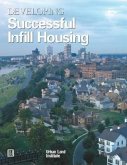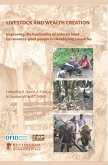Many countries have large stocks of government-built housing which, for various reasons, are in poor physical conditions and/or do not conform to the expectations of occupants. The occupants of such housing frequently make unauthorised but quite considerable changes and extensions (transformations) to their dwellings. This book examines user-initiated transformations to government-built housing in Bangladesh, Egypt, Ghana and Zimbabwe, surveyed in a research programme sponsored by the UK Department for International Development. The 1600 dwellings surveyed show how relatively low-income households are capable of supplying new rooms and services both to improve their own housing conditions and to supply rental rooms or accommodation for family members living rent-free. The new construction is often of at least as good quality as the original structures and sometime envelopes the original in a new skin. It is clear that transformation adds accommodation and services to existing housing, upgrades the housing stock, and creates variety out of uniformity. The study leads to policy suggestions to encourage transformations for the renewal of government housing. These include the provision of loan finance; the encouragement of co-operation between neighbours, especially in multi-storey housing; and the planned colonisation of open space next to the dwellings where plots are not provided. For new housing, it is clear that designs for new areas are only the beginning of an on-going development process rather than a blueprint for once-for-all development.








